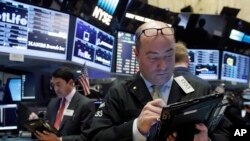Market volatility persists in 2016 as the S&P 500 was down almost 10 percent year-to-date going into Friday trade. Declines in crude oil have largely been to blame due to the oil supply glut and weakening demand. The outlook for oil remains weak because of the ongoing stalemate between OPEC and non-OPEC nations in terms of who will capitulate first and cut production.
On Friday morning, however, oil moved sharply higher, prompted by more hints that OPEC is ready to consider a cut in oil production, according to a Wall Street Journal report late Thursday night. But, is this one data point - essentially renewed “chatter” - enough to support the complex market and call it a rally?
Oil Recovery
The massive decline in oil prices since July 2014 is not only impacting the markets, but it is also a major blow for oil-dependent countries, many of which are struggling to present 2016 budgets and looking for ways to derive growth from non-oil sectors such as infrastructure, agribusiness and services. While the potential is there, it will take time to see yield from these efforts because of the unnatural focus placed on commodity-driven growth during the boom as other areas were largely ignored.
"The energy industry, like other industries, is cyclical and will eventually recover. Once the world’s economies regain their footing and growth trajectories, the demand for oil, and the price, will rise,” Mark Friedgan, COO of Eligo Energy explained. “At that point, the shale producers can resume investing in technology, driving their break-even prices lower and increasing their competitiveness. The energy space will be very interesting in the coming years and will definitely present some opportunities for savvy players."
Banks and Central Bank Policy
The bigger issue for the investing landscape is weakness in global banks due to interest rates and devaluation. Year-to-date, the financial sector was down roughly 16 percent heading into Friday trade. Zero-to-negative interest rates impact bank earnings and the ability to grow. Because this type of policy is relatively new, there is little precedence on how banks will perform in this type of environment.
Federal Reserve Chairwoman Janet Yellen testified before the Senate Banking Committee Wednesday and Thursday, fielding questions about the economy, rate hikes, negative interest rates, among other items, which did not lift investor sentiment.
One thing that the investing community can agree on is markets do not like uncertainty, and price action has certainly confirmed this. Global investors are losing confidence in political and central bank leadership. Earnings are weak, and global growth, as economic data suggests, is slowing. Consumers are not spending; they are saving.
Have Markets Found a Bottom?
Despite these major headwinds, stocks opened higher on Friday morning, extending gains through the first half of the session, led by a rebound in energy and the financial sector, following a steep selloff through the week. Crude oil ended the week up 12 percent.
The banking sector breathed a sigh of relief following Deutsche Bank’s announcement it would buy back $5.4 billion of its debt in an effort to boost investor confidence in its finances. Elsewhere, JP Morgan CEO Jamie Dimon purchased 500,000 shares, or $26 million, of his company’s stock, which was down 20 percent year-to-date prior to Friday’s surge.
The key question is has the market hit a bottom with the S&P 500 off nearly 10 percent year-to-date? While not calling it a bottom, Jeremy Klein, Chief Market Strategist at FBN Securities in New York, sees some clues from indicators that may be a welcome sign for bulls. “With open interest for the E-Minis spiking to historic heights and the average monthly NYSE intraday TICK residing well inside oversold territory, ample rocket fuel sits in the tank to stoke any perceived upward momentum,” Klein said in a research note.
What’s On Tap for the Week Ahead
Looking ahead to next week’s calendar, Mainland China reopens, while U.S. markets will be closed Monday for President’s Day. The earnings calendar is slowly starting to wind down, and economic data is relatively light. With a quiet calendar, traders will largely be focused on commodities and currencies as the market struggles to find stability.
While Friday’s bullish run was a welcome breather from the relentless selling, investors have to ask themselves was this a change in fundamentals or more of a short covering, technical rally? Traders we spoke with remained cautious, keeping position size small and using rallies to sell into and dips to buy. It “feels” more like a trading environment than an investing environment, meaning cash is still not being deployed for long-term positions... yet.
Peter Costa, governor with the New York Stock Exchange and president of Empire Executions said, “If we continue to see rotation into the financials, that will be an indication that more recovery in the market may be ahead.”








